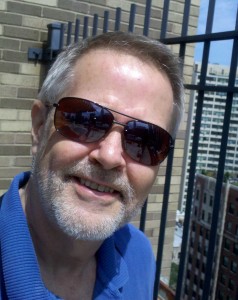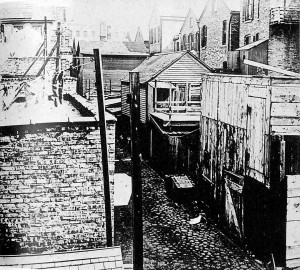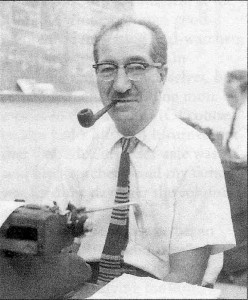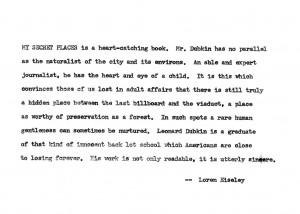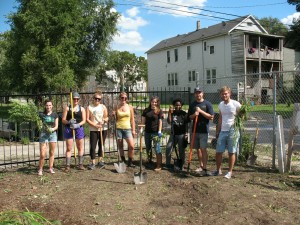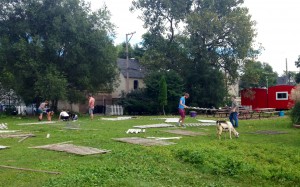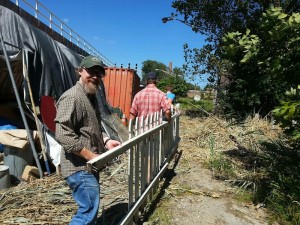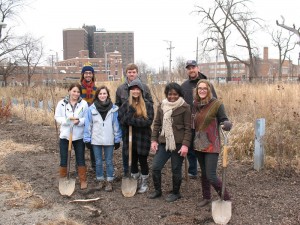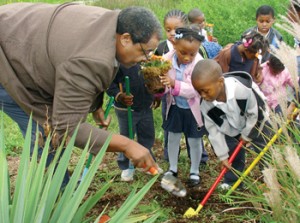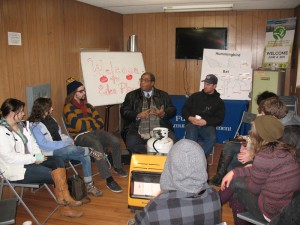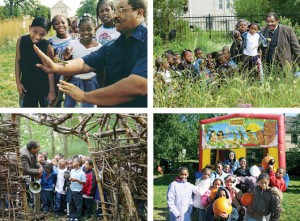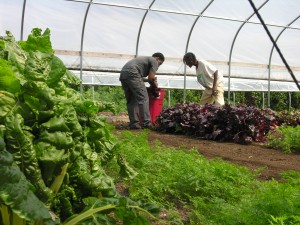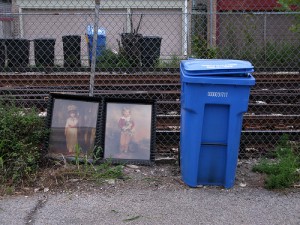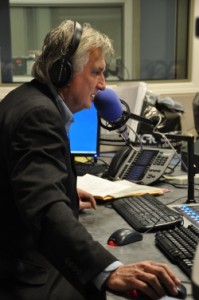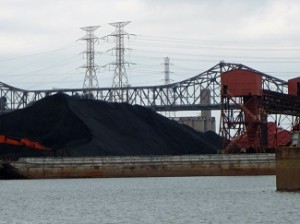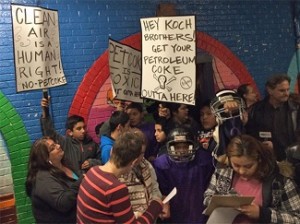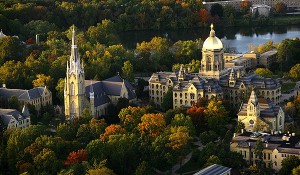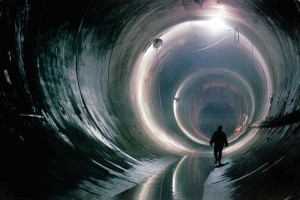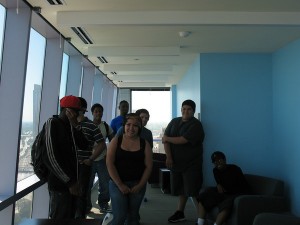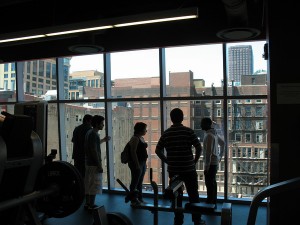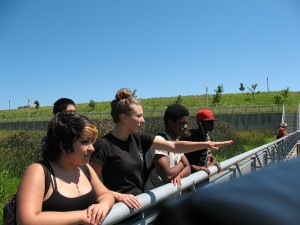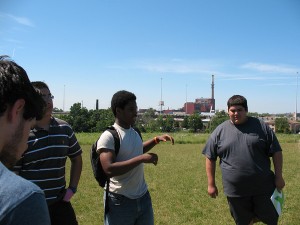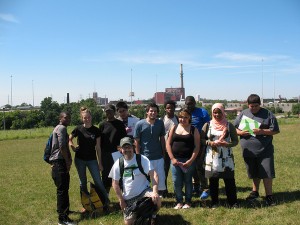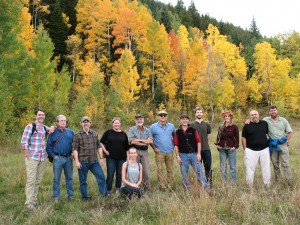
This past September, I joined a group of writers convened by Gavin Van Horn (of the Center for Humans and Nature in Chicago) and John Hausdoerffer (a professor at Western State Colorado University and the director of WSCU’s Headwaters Project) for a much-anticipated writers’ retreat in the beautiful mountain town of Crested Butte, CO. The idea was to gather invited writers together to shares conversation, ideas, outlines, and initial jottings as a means of kicking off a new book project to be co-edited by Gavin and John called The Relative Wild. As they describe it, this is a collection of stories and essays that
will explore how human and ecological communities co-create the wild. The “myth of the pristine” — that nature is most valuable when liberated from human presence — is quickly being supplanted by “the myth of the humanized,” the assertion that nothing is untouched by human influence, and therefore one may embrace ecosystem change, even extreme changes, as “natural.” We suggest that both of these myths deserve equal scrutiny, and that one way to do so is by celebrating the common ground of the relative wild: the degrees and integration of wildness and human influence in any place.
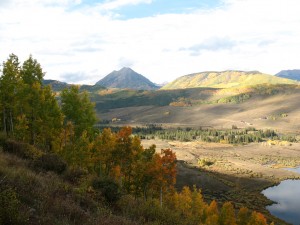
Having participated in a previous CHN writer’s retreat at the Indiana Dunes National Lakeshore for the forthcoming book City Creatures (Univ. of Chicago Press, 2015), I know firsthand how extraordinary an opportunity it is to take time out from the busy schedule and harried demands of ordinary life to mingle with talented and creative writers all focused on a common project. The fact that the Relative Wild gathering transpired in a beautiful mountain setting at the autumnal equinox was even better. Over the course of two and a half days, we had many great conversations, took hikes in the stunning mountains and valleys outside of Crested Butte, ate meals together, used quiet time for writing and reflection, and engaged in several productive and inspiring writing workshop sessions led by the esteemed naturalist and prolific nature writer, Robert Michael Pyle.
My planned contribution to the book will be co-written with Mr. Michael Howard, the Executive Director and founder of Eden Place Nature Center in Chicago, and is tentatively entitled “Cultivating the Wild on Chicago’s South Side: Stories of People and Nature at Eden Place.” What follows below is an example of the writing we were assigned to do at writers’ workshop. Here, Bob Pyle challenged us to closely observe and meditate on our immediate surroundings and experiences in Crested Butte that weekend, and to write about them as evocatively as possible. Whether or not we connected these observations to our planned essay/story topics for the book was optional. His writing prompt — to start with the phrase, “Encounter, here . . .” — was both deceptively simple and (for me) highly challenging. This is what I wrote.
Three Encounters (in response to Bob Pyle’s writing prompt)
by Mike Bryson
Encounter: Crest Butte, CO
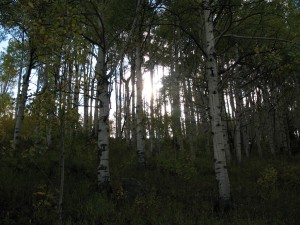
September 21 — We leave our lodge on foot here in town, walk for what only seems to be a few blocks (hardly far enough to go anywhere at home), and suddenly, we’re on a mountain trail. We hike high above the winding Slate River, through intermittent stands of turning-gold aspen. I gawp at the massive bulk of Mount Crested Butte, Gothic Mountain, the interplay of rock and tree line, the contrasting beauty of the valley, the rich topography that is overwhelming in its newness and scale.
The damp, rich, loamy smell of the forest, though, makes just as strong an impression. Aspen leaves are scattered on the trail, gold, green-dappled, as beautiful as mountains. My companions, old friends and new, chuckle at my boyish “golly gee” reaction to this place. I am a rube in this wilderness, as stupefied as a farm boy in New York City.
September 22 — After dark, I gather six aspen leaves of varying size and hue, each jeweled with perfect drops of rainwater. I blot them dry in my room, press them between the pages of Gary Snyder’s Mountains and Rivers without End. It’s comforting to know that my wife and children will consider this a worthy gift upon my return.
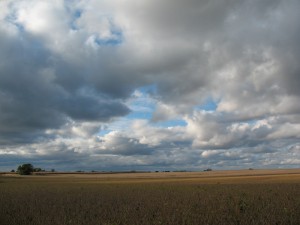
Encounter: Metamora, IL
Reeser family reunion at the Mennonite Heritage Center, east of Metamora in central Illinois’ Woodford County. The heart of Illinois farm country, just northeast of Peoria, soils built by centuries of deep-rooted prairie growth, decay, regeneration. Corn and soybeans now dominate this quiet land, the rolling soft green hills of the Mackinaw River valley belying the fact that this is in part a built environment, made and maintained with tractors and chemicals. The ditches and streams here are as vulnerable to nitrogen runoff from the seasonal applications of anhydrous as Oh-Be-Joyful Creek is to heavy metal contamination from the Daisy Mine upstream of Crested Butte, Colorado.
After our family’s potluck dinner and visiting with elderly relatives over rhubarb pie and weak coffee, we walk over to a half-acre prairie restoration dedicated to my great-great-great grandfather, Christian Reeser, a Swiss-German immigrant who lived and farmed to age 104. Once much of Illinois looked like this. Tallgrass prairie: 1/100th of one percent remains.
Encounter: Chicago IL
September 17 — Eden Place Nature Center, in the Fuller Park neighborhood on Chicago’s South Side. Michael Howard and I sit and talk in the trailer that serves as office, classroom, conference area, and tool shed at Eden Place, a 3.4-acre farm and nature center wrought from the desecration of an illegal waste dump in the middle of a residential area in one of Chicago’s poorest, smallest, most isolated, and most polluted neighborhoods. Outside, goats bleat, chickens fuss and cluck, two ponies graze quietly.
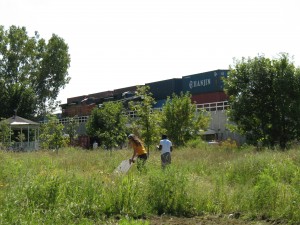
The early stages of an oak savannah and prairie restoration take up the north half of this refuge, the only bona fide nature center on the entire south side of the city. Modestly sized and brightly painted barns stand against the tall concrete embankment of the railroad that runs along Eden Place’s western border. Exhaust-streaked trains, passenger and freight, clatter by at short intervals. Too often, freight lines stop and idle here, engines rumbling, diesel fumes thick in the air. Raised-bed gardens sport squash, beans, peppers, tomatoes, herbs.
“What is this book supposed to be about again?” Michael asks. “Remind me. I’m sorry — this has been a long week.” He is exhausted by his new job at the Illinois Department of Natural Resources, but relieved to have stolen a few rare moments of down time at Eden Place. An oasis in the city.
“The Relative Wild,” I reply. He nods, looks thoughtful.
“When we created Eden Place,” he said, “the thought was this: if we build it, the wild will come.” And so it has over the last fifteen or so years. Red-tailed hawks. Migrating songbirds. Raccoon, opossum, skunk. White-tailed deer, seen in the damp mist at two in the morning. Urban wild amidst an imposing hardscape of pavement and gravel, humble houses and gritty vacant lots, cut off and bounded by physical barriers of twelve-lane expressway, railroads, abandoned industrial yards. Build it, the man says. The wild will come.
Crested Butte, CO
September 23, 2014
